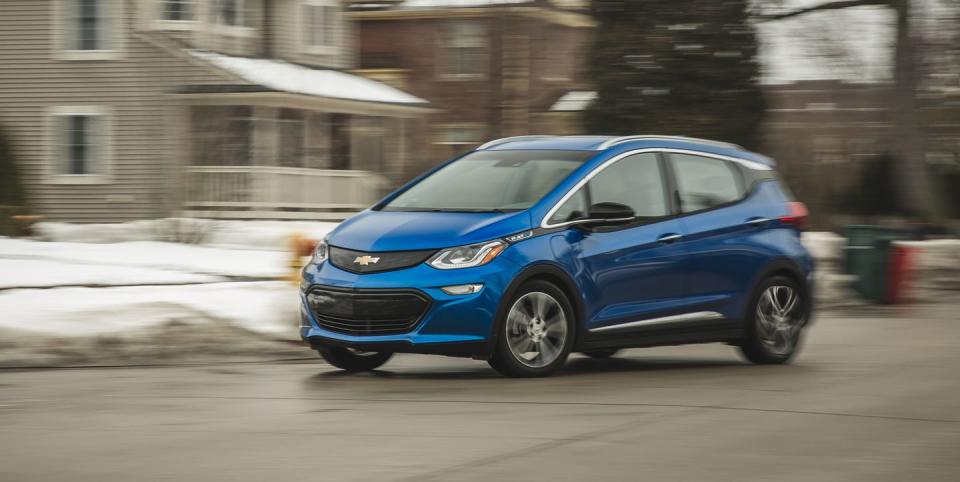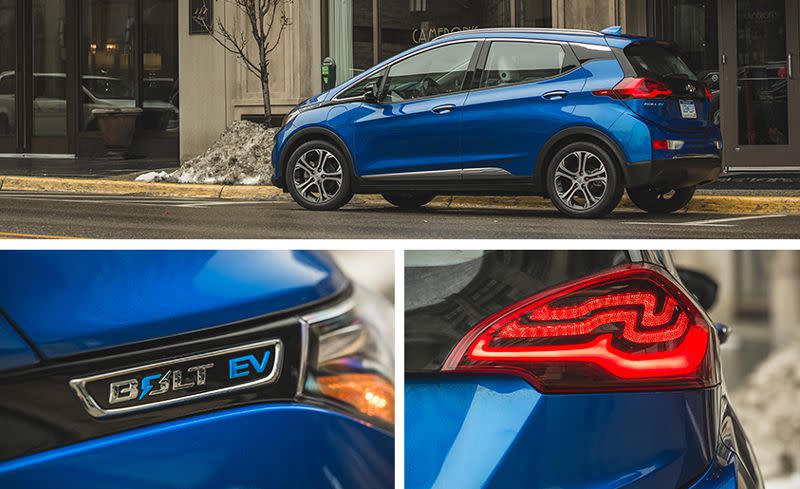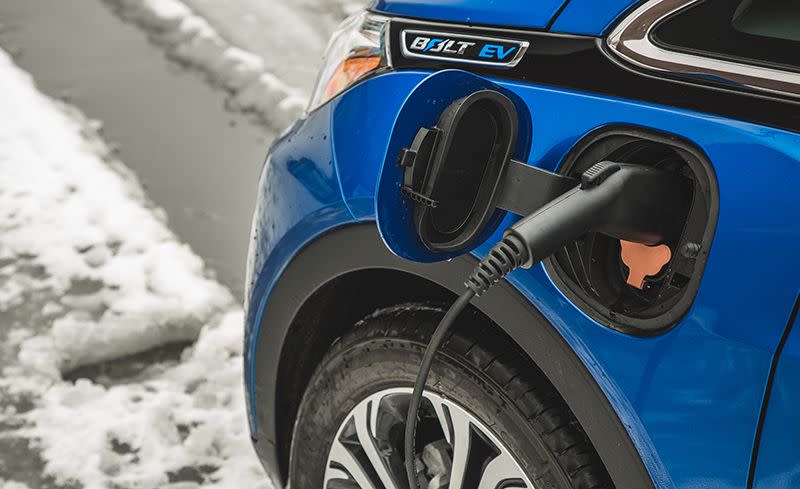Tested: How Cold Weather Affects EV Range

Range anxiety is real. Take it from someone who has been stranded with his wife in an electric vehicle not once but twice: You’ll want to watch the distance-to-empty gauge of an EV with a close eye. This is even more critical when the temperature drops below freezing, which is exactly why we ran a 2018 Chevrolet Bolt EV on our 75-mph highway fuel-economy loop in icy February to gauge how low temperatures affect electric range.
Battery chemistry, like Grandpa and almost everything else in the universe, slows down when it gets cold. The result? The battery pack has less energy to propel the car. If some of the battery’s energy is used to warm itself to a more efficient operating temperature, that, too, will reduce the battery’s state of charge and the car’s overall efficiency. All EVs suffer substantial range degradation in cold ambient conditions; we used the Bolt to give us and you an indication of how much.
With the thermometer’s needle pointing at 36 degrees Fahrenheit, we headed out with the cruise control set at a steady 75 mph. We averaged 83 MPGe. Compared with the 102 MPGe we recorded in a 2017 Bolt in 56-degree weather (nearly ideal conditions), that’s a 19 percent drop in fuel economy. Calculating the EV range based on battery capacity means a Bolt will travel 140 miles in the cold versus the 180 miles we recorded in the autumn. But the fuel economy and EV range in our test cars come with a couple of caveats.
Those are centered around a number of variables for which we can’t account, the single biggest being that we used two different cars, one a 2017 model and one a 2018 model. The moderate-weather Bolt had more than twice the miles on its odometer as the cold-weather car, which could contribute to slightly less mechanical drag, for example. But all those variables couldn’t come close to accounting for the lost range and efficiency.
According to Jim Khoury, General Motors’ senior manager of global battery engineering, the Bolt’s onboard thermal management doesn’t come into play until the battery’s temperature (not the ambient temperature) drops below 37 degrees Fahrenheit or spikes above 95 degrees. It takes a while for the pack’s heater, which is integrated in the battery’s liquid-cooling circuit, to raise the battery’s core temperature. In the case of cold-weather operation, the 1.8-kW heater kicks in (which is a significant portion of the power draw on a car cruising at highway speeds), pulling energy from the battery and reducing range. Khoury also points out that all the other accessories used in winter, including seat heaters, cabin heaters, and even headlights (there is less sunlight so they’re used more), increase the demands on the battery in winter months. None of these accessories were used during our cold-weather test, however (we usually set the interior climate control to 72 degrees for our highway fuel-economy tests but wanted to maximize range).
Khoury also informed us that the battery heater is one reason why there sometimes is a nonlinear relationship between the distance-to-empty gauge dropping and the odometer climbing. It takes time for the heater to warm up the battery (much like an engine heating up, only it takes longer), which causes a precipitous drop in range early in the trip. We started our winter highway test with an indicated 170 miles of range. When we turned around 66 miles later, the indicated range was 85. Yet when we returned, after traveling the same 66 miles, the remaining range was 35 miles-not the 19 miles we expected. And this is despite the ambient temperature dropping from 36 degrees to 27 degrees over that period of time.
The battery heater also is active when the car is plugged in to the charger. If the battery temp is too cold, the battery will turn on and run at one-quarter power when charging. This, obviously, contributes to more electricity consumed per charging cycle. To avoid this additional penalty, we parked the Bolt in a heated garage while it charged after the highway run. If the battery gets colder than -13 Fahrenheit, the heater operates at full power to protect the battery. This means if you are charging with a standard 120-volt outlet, all of the available power is going to heating the battery and not replenishing its cells. That’s all the more reason to have a Level 2 charging station if you live in a cold climate.
With every new generation, EVs become more efficient, go farther between charges, and replenish their charge more quickly. Pretty soon the reduced winter range of an EV will be even less of a factor. Until then, keep an eye on the range gauge in cold weather so that your battery’s seasonal affective disorder doesn’t magnify your range anxiety-or the anger of your passengers. My wife will confirm that’s a good plan.
You Might Also Like

 Yahoo Finance
Yahoo Finance 


